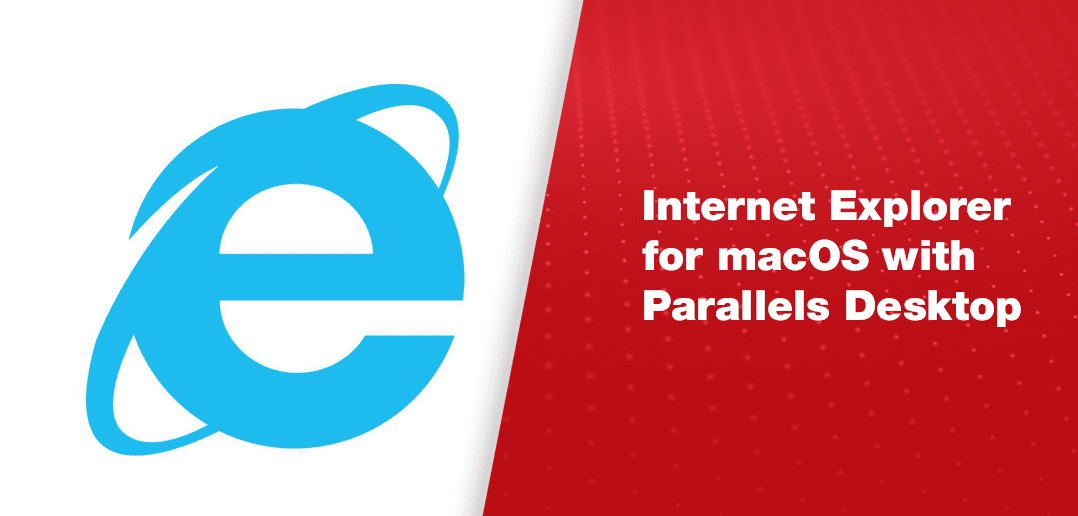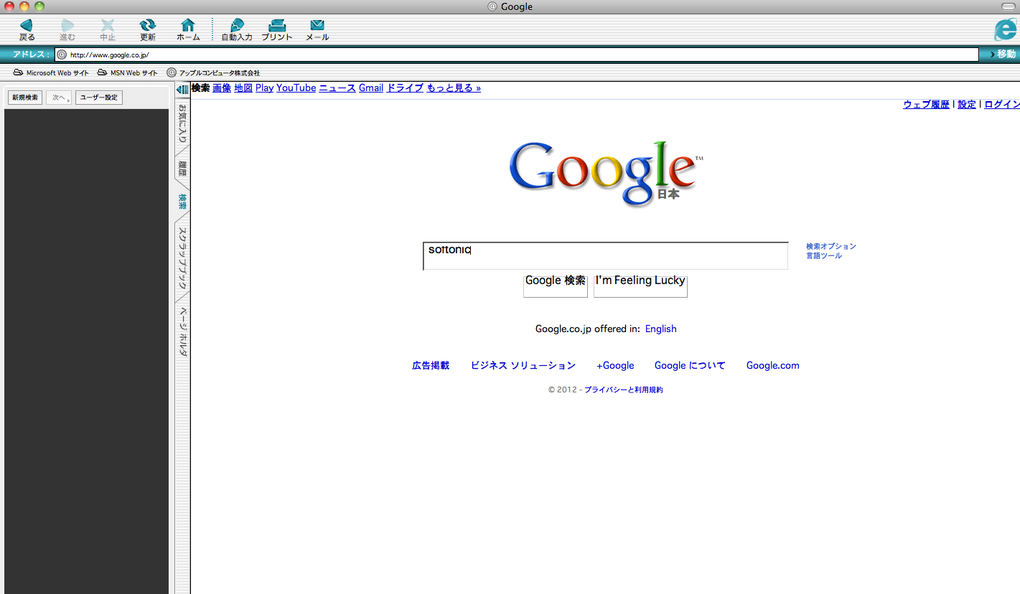Download Internet Explorer For Mac 2018
Microsoft once had a free browser, Internet Explorer for Macintosh. It was designed specifically to operate on Mac computers. Unfortunately, Microsoft relinquished support for the browser on December 31st, 2005. While Microsoft no longer supports the browser, you can still download it and use it on your Mac. Internet Explorer Mac is the most far and wide used World Wide Web browser. It is packaged with the Microsoft Windows operating system and can also be downloaded from Microsoft’s Web site. It provides users with a lot of the features of contending browsers, such support for cascading style sheets, the promise of increased security against malware, tabbed browsing, RSS feeds. It competes against browsers including Mosaic, Firefox, Opera and Apple Computer’s Safari.

This is the newest version of Internet Explorer now available for all MAC OS X computers! You can install this program and update it any time! Hi Nathan, Thank you for choosing Windows 8 and thanks for providing us an opportunity to assist you. As per the description, you want to download IE 10 for MAC.

There have been several versions of the web browser over the years. The most recent version is Internet Explorer 10.6.8. This current version has been revamped and comes with a plethora of new and updated features. Some features from previous versions have also been removed. The web browser’s performance is greatly enhanced as an effect of speed improvements. Internet Explorer 10.6.8 Mac also utilizes less memory with numerous tabs open than current versions of Firefox and Chrome.
- Internet Explorer is more standards-compliant and faster than ever.
- There is minimum interface.
- It has outstanding privacy and security.
- The most recent version of the web browser comes with enhanced performance due to its improvement in speed.
- It gives much quicker page loading.
- There is support for WebGL, which is an open-graphics set that can provide 3D graphics inside web browsers.
- There is support for new web standards.
- Internet Explorermac5.2.3 now has support for live chat.
- Apps now play better with web pages. Users can open apps in a smaller browser window and can put two apps side by side in Snap mode. In previous versions, users could only do one thing at a time.
- Infinite Tabs is now allowed, and the browsing experience will not be slowed down.
- There is support for Multi-Window Browsing.
- There have been improvements to the Favorites Center- Users can remain in the new user interface and edit bookmarks. There is also the opportunity to give each bookmark a personalized image so that it’s immediately identifiable when you call up the list.
To download Internet Explorer 10.6.8, your PC must have a few minimum requirements.
- A Windows RT 8.1 or Windows 8.1 PC
- 1 GHz or faster processor with support for SSE2, PAE, and NX
- At least 1 GB of RAM for 32 bit or 2 GB for 64 bit
- Hard disk space of 16 GB for 32 bit or 20 GB for 64-bit
- Graphics card of Microsoft DirectX 9 graphics device with WDDM driver
- Internet access
Author Note: Although Internet Explorer Mac is no longer supported by Mac, it can still be downloaded and used by regular Mac users. The latest version offers much-improved performance and features that will make the user experience awesome, and you will hardly have anything to complain about.
-->Download Internet Explorer Version 11 For Mac
Important
Microsoft 365 apps and services will not support Internet Explorer 11 starting August 17, 2021 (Microsoft Teams will not support Internet Explorer 11 earlier, starting November 30, 2020). Learn more. Please note that Internet Explorer 11 will remain a supported browser. Internet Explorer 11 is a component of the Windows operating system and follows the Lifecycle Policy for the product on which it is installed.
Find out how to achieve better backward compatibility for your legacy web applications with the Enterprise Mode Site List.
Jump to:
Enterprise Mode for Internet Explorer 11 can be very effective in providing backward compatibility for older web apps. The Enterprise Mode Site List includes the ability to put any web app in any document mode, include IE8 and IE7 Enterprise Modes, without changing a single line of code on the website.
Sites in the <docMode> section can be rendered in any document mode, as shown in blue above. Some sites designed for older versions of Internet Explorer may require better backward compatibility, and these can leverage the <emie> section of the Enterprise Mode Site List. IE8 Enterprise Mode provides higher-fidelity emulation for Internet Explorer 8 by using, among other improvements, the original Internet Explorer 8 user agent string. IE7 Enterprise Mode further improves emulation by adding Compatibility View.
Compatibility View, first introduced with Internet Explorer 8, is basically a switch. If a webpage has no DOCTYPE, that page will be rendered in Internet Explorer 5 mode. If there is a DOCTYPE, the page will be rendered in Internet Explorer 7 mode. You can effectively get Compatibility View by specifying Internet Explorer 7 in the <docMode> section, as this falls back to Internet Explorer 5 automatically if there's no DOCTYPE, or you can use IE7 Enterprise Mode for even better emulation.
Tips for IT professionals
Inventory your sites
Upgrading to a new browser can be a time-consuming and potentially costly venture. To help reduce these costs, you can download the Enterprise Site Discovery Toolkit, which can help you prioritize which sites you should be testing based on their usage in your enterprise. For example, if the data shows that no one is visiting a particular legacy web app, you may not need to test or fix it. The toolkit is supported on Internet Explorer 8, Internet Explorer 9, Internet Explorer 10, and Internet Explorer 11. The toolkit also gives you information about which document mode a page runs in your current browser so you can better understand how to fix that site if it breaks in a newer version of the browser.
Once you know which sites to test and fix, the following remediation methods may help fix your compatibility issues in Internet Explorer 11 and Windows 10.
If you're on Internet Explorer 8 and upgrading to Internet Explorer 11:
Use the Enterprise Mode Site List to add sites to the Internet Explorer 5, Internet Explorer 7, and Internet Explorer 8 documents modes, as well as IE8 Enterprise Mode and IE7 Enterprise Mode.
Sites with the x-ua-compatible meta tag or HTTP header set to 'IE=edge' may break in Internet Explorer 11 and need to be set to Internet Explorer 8 mode. This is because 'edge' in Internet Explorer 8 meant Internet Explorer 8 mode, but 'edge' in Internet Explorer 11 means Internet Explorer 11 mode.
Sites without a DOCTYPE in zones other than Intranet will default to QME (or 'interoperable quirks') rather than Internet Explorer 5 Quirks and may need to be set to Internet Explorer 5 mode.
Some sites may need to be added to both Enterprise Mode and Compatibility View to work. You can do this by adding the site to IE7 Enterprise Mode.
If you're on Internet Explorer 9 and upgrading to Internet Explorer 11:
Internet Explorer For Mac Os
Use the Enterprise Mode Site List to add sites to the Internet Explorer 5, Internet Explorer 7, and Internet Explorer 9 document modes.
Sites with the x-ua-compatible meta tag or HTTP header set to 'IE=edge' may break in Internet Explorer 11 and need to be set to Internet Explorer 9 mode. This is because 'edge' in Internet Explorer 9 meant Internet Explorer 9 mode, but 'edge' in Internet Explorer 11 means Internet Explorer 11 mode.
Sites without a DOCTYPE in zones other than Intranet will default to Interoperable Quirks rather than Internet Explorer 5 Quirks and may need to be set to Internet Explorer 5 mode.
If your sites worked in Internet Explorer 9, you won't need IE8 Enterprise Mode or IE7 Enterprise Mode.
If you're on Internet Explorer 10 and upgrading to Internet Explorer 11:
Use the Enterprise Mode Site List to add sites to the Internet Explorer 5, Internet Explorer 7, and Internet Explorer 10 modes.
Sites with the x-ua-compatible meta tag or HTTP header set to 'IE=edge' may break in Internet Explorer 11 and need to be set to Internet Explorer 10 mode. This is because 'edge' in Internet Explorer 10 meant Internet Explorer 10 mode, but 'edge' in Internet Explorer 11 means Internet Explorer 11 mode.
If your sites worked in Internet Explorer 10, you won't need IE8 Enterprise Mode or IE7 Enterprise Mode.
If you're on Internet Explorer 11 and upgrading to Windows 10:
You're all set! You shouldn’t need to make any changes.
Internet Explorer
Tips for web developers

If your website worked in an older version of Internet Explorer, but no longer works in Internet Explorer 11, you may need to update the site. Here are the set of steps you should take to find the appropriate remediation strategy.
Try document modes
To see if the site works in the Internet Explorer 5, Internet Explorer 7, Internet Explorer 8, Internet Explorer 9, Internet Explorer 10, or Internet Explorer 11 document modes:
Open the site in Internet Explorer 11, load the F12 tools by pressing the F12 key or by selecting F12 Developer Tools from the Tools menu, and select the Emulation tab.
Run the site in each document mode until you find the mode in which the site works.
Note
You will need to make sure the User agent string dropdown matches the same browser version as the Document mode dropdown. For example, if you were testing to see if the site works in Internet Explorer 10, you should update the Document mode dropdown to 10 and the User agent string dropdown to Internet Explorer 10.
If you find a mode in which your site works, you will need to add the site domain, sub-domain, or URL to the Enterprise Mode Site List for the document mode in which the site works, or ask the IT administrator to do so. You can add the x-ua-compatible meta tag or HTTP header as well.
Try IE8 Enterprise Mode
If a document mode didn't fix your site, try IE8 Enterprise Mode, which benefits sites written for Internet Explorer 5, Internet Explorer 7, and Internet Explorer 8 document modes.
Enable the Let users turn on and use Enterprise Mode from the Tools menu policy locally on your machine. To do this:
Search for and run gpedit.msc
Navigate to Computer Configuration > Administrative Template > Windows Components > Internet Explorer.
Enable the Let users turn on and use Enterprise Mode from the Tools menu Group Policy setting.
After making this change, run gpupdate.exe /force to make sure the setting is applied locally. You should also make sure to disable this setting once you're done testing. Alternately, you can use a regkey; see Turn on local control and logging for Enterprise Mode for more information.
Restart Internet Explorer 11 and open the site you're testing, then go to Emulation tab in the F12 Developer Tools and select Enterprise from the Browser profile dropdown. If the site works, inform the IT administrator that the site needs to be added to the IE8 Enterprise Mode section.

Try IE7 Enterprise Mode
If IE8 Enterprise Mode doesn't work, IE7 Enterprise Mode will give you the Compatibility View behavior that shipped with Internet Explorer 8 with Enterprise Mode. To try this approach:
Go to the Tools menu, select Compatibility View Settings, and add the site to the list.
Go to Emulation tab in the F12 Developer Tools and select Enterprise from the Browser profile dropdown.
If the site works, inform the IT administrator that the site needs to be added to the IE7 Enterprise Mode section.
Note
Adding the same Web path to the Enterprise Mode and sections of the Enterprise Mode Site List will not work, but we will address this in a future update.
Download Internet Explorer For Mac
Update the site for modern web standards
We recommend that enterprise customers focus their new development on established, modern web standards for better performance and interoperability across devices, and avoid developing sites in older Internet Explorer document modes. We often hear that, due to fact that the Intranet zone defaults to Compatibility View, web developers inadvertently create new sites in the Internet Explorer 7 or Internet Explorer 5 modes in the Intranet zone, depending on whether or not they used a DOCTYPE. As you move your web apps to modern standards, you can enable the Turn on Internet Explorer Standards Mode for local intranet Group Policy setting and add those sites that need Internet Explorer 5 or Internet Explorer 7 modes to the Site List. Of course, it is always a good idea to test the app to ensure that these settings work for your environment.
Internet Explorer For Mac Download 2018
Related resources
